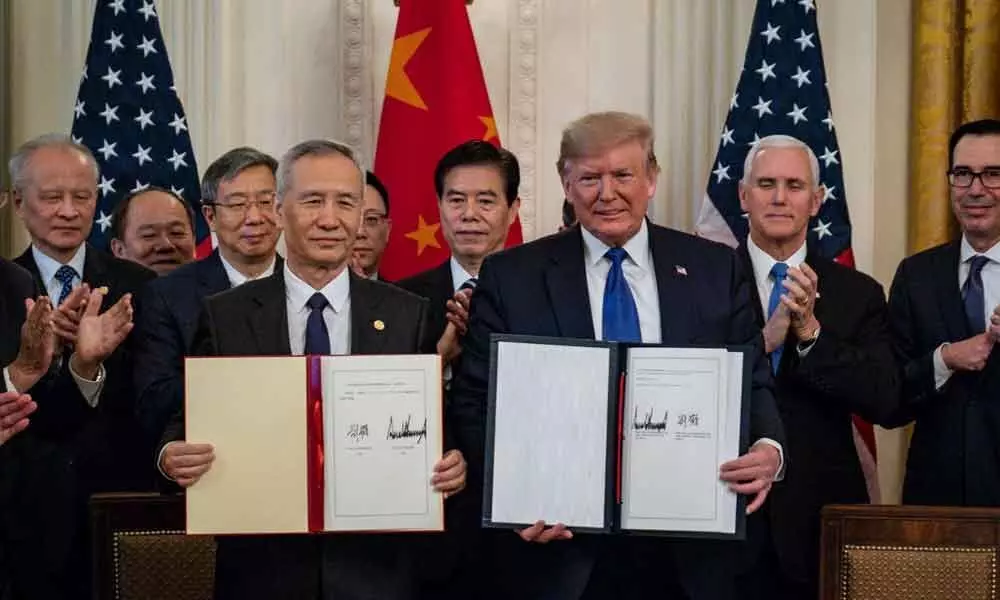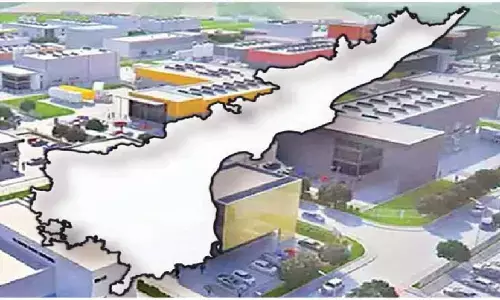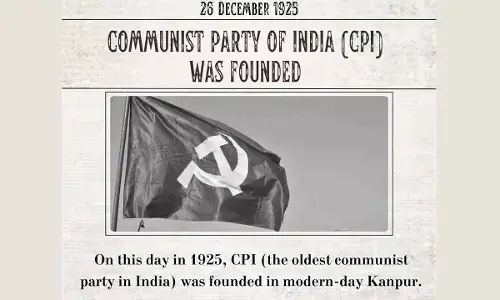Truth masked under US-china trade deal

Amidst the global economic uncertainty, the first phase of trade deal concluded between US and China comes with a deep sigh of relief.
Amidst the global economic uncertainty, the first phase of trade deal concluded between US and China comes with a deep sigh of relief. Although, widely regarded as a welcoming move, it would be overplaying to state that the deal is panacea for all economic stumbling blocks, which are very structural in nature.
Growing inequalities within and among the nations and dissatisfaction amongst the middle class in terms of socio-economic immobility needs the critical attention of present day policymakers. The gushing up of wealth from a broader fragmented base of workers to tiny but united corporates is one of the reasons for the economic slowdown.
The widening gulf between the average middle class and the rich provides a hot-bed for so called 'populist leaders'. US president Donald Trump had used this time-tested political card successfully as a possible leverage to appease disenchanted sections of the American society.
In the race for 2020 presidential elections, Trump had started his re-election campaign with national security, in the pretext of ongoing tussle with Iran and recently concluded phase one of trade deal with China as bargaining chips to address his core constituency.
The neo - liberal policies blended with domestic characteristics played out well in the case of China to transform itself into a global manufacturing hub. As an export-led economy, China had started flexing its economic and military muscles.
Availability of cheap labour, with a desire to enhance further profits, has pushed American capital base toward Asian giant. US, once a frontrunner in the promotion of globalisation, resorted to reverse its idea of global market integration sensing the hullabaloo of have
nots. It is widely believed that the protectionism - what is considered as neo-normal - is ascending the newer heights in Trump's America.
It remains to be seen whether the parties of trade deal adhere to commitments and relive the global economic chain caught in trade war.
The American administration has been at odds with Chinese over the apprehension of undue support given to the Chinese State-owned companies in the form of subsidies, intellectual property theft, trade forceful technology transfer from the American firms operating in China.
Trump slammed Huawei, a China based private ICT infrastructure provider, allegedly for spying on American citizens and banned its business operations in US.
Viewed as a probable winner in the 5-G race, Huawei, is the first player to develop high end infrastructure which supports the seamless flow of information in the upcoming 5-G world. The R&D expenditure of Chinese firms like Huawei, ZTE surpasses the spending of the US-based Amazon and apple. The US, considered as an unchallenged technological leader of the world, wants to maintain its tech-hegemony and any sort of competition would be a major irritant to its supremacy.
As a part of 'Made in China-2025' plan, China wants to un-tag the label of low-cost manufacturing hub and aims to attain the status of high-tech power centre of the world. It is true that China aspires to occupy the top seat in technological spectrum coupled with domination in geo- political arena through ambitious projects like 'One Belt - One Road' reflects the struggle to position itself as an equivalent to the US but not second to it.
During the 2016 presidential election campaign, Trump accused Beijing of stealing US jobs and burgeoning trade deficit which previous American administrations had turned a blind eye. There is no momentum gap between rhetoric to action in imposition of import tariffs and retaliatory measures from Chinese side soon followed with similar pace.
It is not only the global value chain that has been at the brunt of trade tussle but also the American middle class, who relied heavily on imports from Chinese side and US farmers who see China as major destination for their farming exports.
Of course, the core part of trade deal centres around tariff cuts from the both sides, guarantees from Chinese side to enhanced market access for American agricultural products and Fintech firms, it is very early to say that commitments made under the deal would live in letter and spirit.
Chinese side has assured the US administration on rigid laws related to forced technology transfers and protection of intellectual property rights. Some sections of American conservative lobby are unhappy with the deal which failed to address the major concerns like indirect subsidies which Chinese govt channelize towards State-owned enterprises.
Yes, the truce gives some sort of fillip to economic arm, It is important to address the core problem which global economy is facing for quite long time. Globalisation accelerated the phenomenon of poor nations- rich corporates.
The rousing scepticism on global integration in several parts of the world provide enough space to Trump like "tariff guys" to occupy decision making seats, which amplifies an already ailing global economic health.
(The writer is Director, Centre for Leadership and Governance and Director, Samudrala VK IAS academy. Views expressed are personal)

















